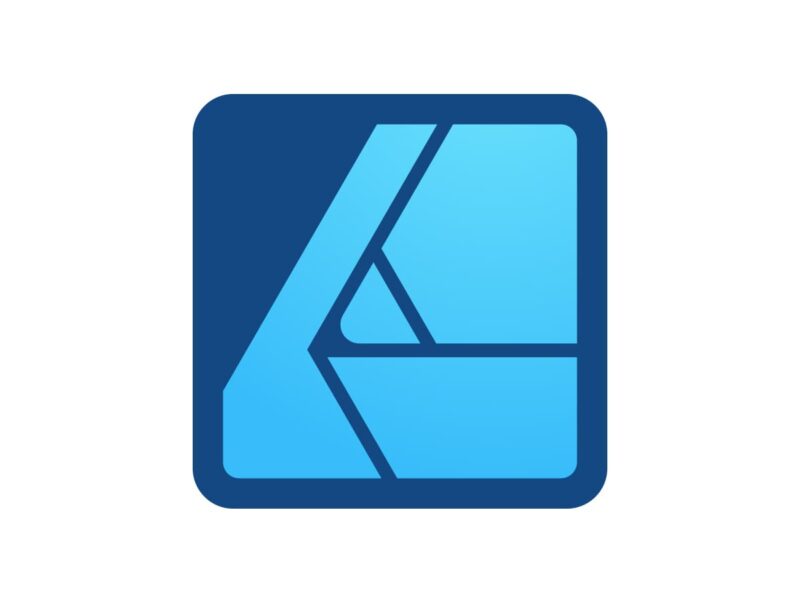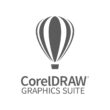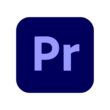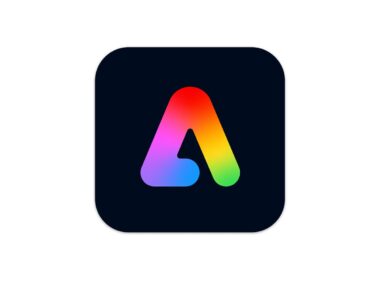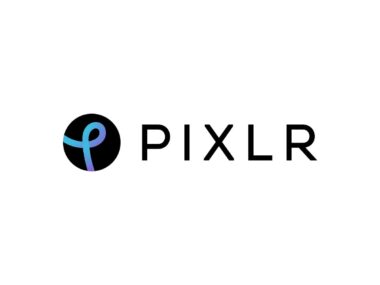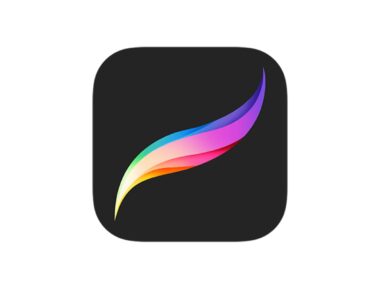Table of Contents
Key Features of Affinity Designer Design Software
Affinity Designer is a highly acclaimed graphic design software, known for its professional-level vector features combined with basic photo editing tools. Developed by Serif, a UK-based software company with over 20 years of experience in software development, Affinity Designer is recognized for its proficiency in creating a range of graphics such as concept art, logos, icons, UI designs, print projects, and mock-ups. This software has garnered a reputation for its real-time performance, allowing designers to efficiently build and preview gradients, adjustments, effects, transformations, and curve edits.
One of the unique aspects of Affinity Designer is its compatibility and versatility. It supports a variety of major file types, including JPEG, PDF, SVG, PSD, PNG, TIFF, GIF, and DWG/DXF, making it a flexible tool for various design needs. This feature is particularly beneficial for designers who need to work with a range of file formats and integrate their work into different platforms or mediums.
Regarding user experience, Affinity Designer offers an intuitive interface with customizable keyboard shortcuts, version history tracking, and the ability to save designs in multiple file formats. Its built-in vector tools, which include custom pens, nodes, brushes, and pencils, enable designers to create intricate contours, abstract shapes, and design offset paths. The software also supports the creation of grid patterns, isometric planes, and manages pixel snapping and alignments effectively.
Affinity Designer is praised as an excellent alternative to Adobe Illustrator, especially for its ease of use, value for money, and functionality. Users have highlighted its ability to edit various file types such as SVG, AI, EPS, and PDF files with ease. The software’s intuitiveness and result-oriented performance are often cited as reasons for its popularity among designers. However, some limitations are noted, such as the inability to trace PNG files into vectors, a feature available in some other vector design software.
The software is also well-received by iPad users, who appreciate its one-time purchase model that eliminates the need for monthly subscription fees. This pricing model is particularly appealing for those seeking an accessible, high-quality vector creation tool without recurring costs. The software’s interface is rich with tools, although there is a learning curve, especially for those transitioning from other software. Its tablet-oriented design may sometimes clash with traditional mouse and keyboard usage.
Despite these strengths, some users have expressed concerns about the software’s development and updates. Criticisms include the lack of implementation of promised features, absence of fundamental vector editing tools like a knife tool, and issues with stability and responsiveness from the developers. These factors have led to apprehensions about the software’s long-term viability and support.
In conclusion, Affinity Designer stands out in the graphic design software market for its professional vector features, compatibility with various file types, and user-friendly interface. Its one-time purchase pricing model and robust toolset make it a strong competitor to more established software like Adobe Illustrator. However, potential users should be aware of some of the limitations and concerns regarding its development and feature updates.
Performance
- Positive Experience with Suite Integration: A user in media production using Affinity Designer for over two years praises its intuitiveness and ease of editing various file types, including SVG, AI, EPS, and PDF. They appreciate the seamless integration with other Affinity suite products like Photo and Publisher, enhancing competitiveness. However, they note limitations like the inability to convert PNG files into vectors and the issue with opening Illustrator templates.
- Effective for iPad Users: A marketing and advertising user highlights Affinity Designer as a great vector creation tool for iPad, emphasizing the one-time purchase advantage and its rich interface. Despite being satisfied with the tool’s accessibility and features, they mention challenges with the interface and a learning curve, especially for those transitioning from other software platforms.
- Concerns Over Development and Functionality: A graphic designer reports a negative experience, citing the software’s lack of fundamental vector editing tools and development issues. They express frustration with the failure to implement promised features and poor responsiveness from the developers, raising concerns about the long-term viability and support of the software.
- Cost-Effective and Lightweight for Large Teams: In the entertainment industry, Affinity Designer is viewed as a game-changer due to its cost-effectiveness and low resource requirements. The user reports a smooth transition from more expensive and resource-heavy software, appreciating its advanced features and responsive development team. However, they mention some shortcomings in documentation clarity.
- Smooth Transition from Adobe Suite: A marketing and advertising professional describes their experience as outstanding, noting Affinity Designer’s speed, affordability, and intuitive interface. They found it easy to migrate from the Adobe Suite, with all necessary features included and a well-organized toolbar. The transition was smoother than expected, and the lack of a subscription model is a plus.
- Mixed Feedback from Game Developers: A user in the computer games industry appreciates the ease of use and the abundance of creative tools in Affinity Designer, but finds it less friendly for 3D artists and game developers. They express concerns about the learning curve and the need to use additional software for certain tasks.
- Reliable Illustrator Alternative for Occasional Use: For a non-profit organization, Affinity Designer serves as a reliable alternative to Illustrator, especially due to the cost-effective one-time purchase. The transition was straightforward, and the user found all the essential features needed for their occasional design tasks.
In summary, Affinity Designer’s performance in daily use is generally well-regarded for its cost-effectiveness, ease of use, and feature-rich interface, especially for users seeking an alternative to more expensive, subscription-based software. However, some users have raised concerns about the lack of certain features, development issues, and a steeper learning curve for specific user segments.
Pros
- Cost-Effective: Affinity Designer is known for its one-time purchase price, which includes all updates within the version. This pricing model is significantly more affordable compared to subscription-based models like Adobe Illustrator, making it a popular choice among users who prefer a one-time investment.
- Ease of Use: Users have found Affinity Designer to be easy to use and intuitive. Its user interface is simpler compared to Illustrator, possibly due to the absence of some advanced tools found in Illustrator. This simplicity can be beneficial for new users or those who don’t require highly complex features.
- File Type Support and Compatibility: Affinity Designer excels in supporting a wide range of file types, including Adobe Illustrator AI and Photoshop PSD file formats. It also features ‘Personas’, which allow users to switch between vector and pixel designs, akin to having both Photoshop and Illustrator in one platform.
- Extensive Undo Function: The software allows users to undo changes up to 8,000 times, including history snapshots. This feature is particularly useful for users who frequently revise their work or need to backtrack on multiple steps.
- Comprehensive Vector Design Features: Despite being relatively new in the market, Affinity Designer offers a complete set of tools necessary for professional vector editing. Its development and functionality are often compared favorably to earlier versions of Illustrator.
Cons
- Limited Advanced Tools: Affinity Designer currently lacks some of the more advanced tools offered by Illustrator, such as the mesh tool, blend tool, knife tool, and a wide collection of filters and effects. However, these tools are slated for future updates.
- Artboard Management: The software falls short in artboard management, lacking dedicated tools or options for efficient handling of artboards, which could be a limitation for users working on complex projects or requiring sophisticated organization.
- Drawing Tablet Support: While Affinity Designer is compatible with popular drawing tablets, some users have reported issues with tablet compatibility. This aspect is still a work in progress and may not be as seamless as with other established software.
- Learning Curve and Interface Limitations: There’s a learning curve for users transitioning from other design platforms, especially in terms of interface and interactions. This can be challenging for users accustomed to other software ecosystems.
- Limited Documentation and Community Resources: Some users have found the documentation and learning resources to be less clear or comprehensive, occasionally relying on third-party tutorials for guidance.
In conclusion, Affinity Designer is a strong contender in the vector design software market, offering an affordable, user-friendly, and versatile toolset. While it may lack some advanced features and face challenges in certain areas like artboard management and tablet support, its positives, such as cost-effectiveness, ease of use, and file compatibility, make it a viable option for many designers.
Conclusion
Affinity Designer by Serif stands out as a robust and versatile design software, particularly for vector and raster graphics. Here is an expert perspective on its capabilities, advantages, and limitations:
Overview and Unique Features:
- Personas: Affinity Designer offers three distinct workspaces called Personas – Designer, Pixel, and Export. The Designer Persona is for vector graphics creation, similar to Adobe Illustrator, while the Pixel Persona provides raster workspace tools akin to Photoshop. The Export Persona simplifies the process of exporting various parts of the design. This feature effectively integrates capabilities that would typically require multiple software programs, making it an all-in-one solution for designers.
- iPad Compatibility: The iPad version of Affinity Designer is highly rated, offering almost the same tools as the desktop version. It is well-integrated with the Apple Pencil, making it a strong choice for digital painters and artists. The ability to seamlessly work across desktop and iPad versions of the software enhances its flexibility and convenience.
In conclusion, Affinity Designer is a powerful and economical choice for both beginners and experienced designers, offering a broad range of capabilities in a user-friendly environment. Its one-time payment model and multi-platform support, including an effective iPad version, make it a compelling choice in the design software market. However, some limitations in advanced editing capabilities and multi-object editing should be considered depending on the specific needs of the project or designer.
FAQs
-
What is Affinity Designer and who is it for?
Affinity Designer is a comprehensive graphic design software developed by Serif, suitable for both professional designers and beginners. It offers robust features for vector and raster graphics creation.
-
Can Affinity Designer replace Adobe Illustrator?
Yes, Affinity Designer is often considered a viable alternative to Adobe Illustrator, offering similar vector design capabilities, often at a more affordable cost and without a subscription model.
-
Does Affinity Designer support both vector and raster graphics?
Yes, Affinity Designer supports both vector and raster graphics, allowing seamless switching between these modes within the software.
-
Is Affinity Designer available on multiple platforms?
Affinity Designer is available for Mac iOS, Windows, and iPad, providing flexibility and convenience for designers working across different devices.
-
Are there any ongoing subscription fees for Affinity Designer?
No, Affinity Designer operates on a one-time purchase model, meaning there are no recurring subscription fees after the initial purchase.
